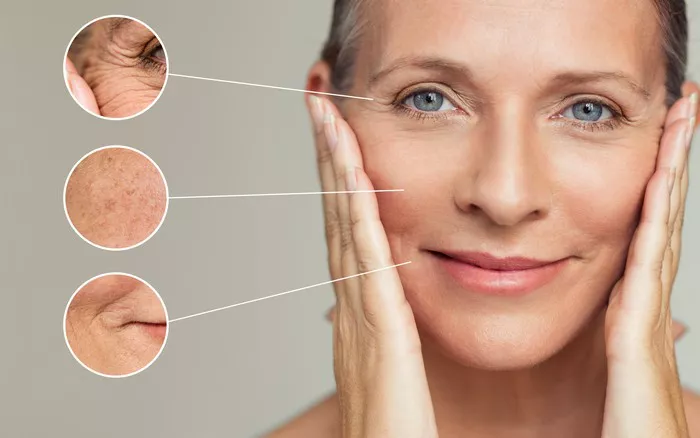As we age, our skin undergoes a number of changes that can result in wrinkles, fine lines, and other signs of aging. While these changes are a natural part of the aging process, they can be distressing for some people. In this article, we will explore the science behind what causes skin to wrinkle with age and what we can do to slow down the aging process.
The Structure of Skin
Before we can understand what causes skin to wrinkle with age, we need to understand the structure of skin. The skin is made up of three layers: the epidermis, the dermis, and the subcutaneous tissue.
The epidermis is the outermost layer of skin and provides a barrier against the environment. The dermis is the middle layer of skin and contains collagen and elastin fibers that give skin its strength and elasticity. The subcutaneous tissue is the deepest layer of skin and contains fat cells that provide insulation and cushioning.
Collagen and Elastin
Collagen and elastin are two proteins that are essential for maintaining the structure and elasticity of skin. Collagen is the most abundant protein in the body and provides strength and structure to skin, while elastin allows skin to stretch and snap back into place.
As we age, the production of collagen and elastin slows down, and the existing collagen and elastin fibers begin to break down. This results in a loss of skin elasticity and the formation of wrinkles and fine lines.
Sun Damage
Exposure to the sun’s ultraviolet (UV) rays is one of the primary causes of skin aging. UV rays can damage collagen and elastin fibers in the skin, leading to a loss of elasticity and the formation of wrinkles and fine lines.
In addition to damaging collagen and elastin, UV rays can also cause hyperpigmentation (dark spots) and other forms of skin damage, such as dryness and roughness.
Free Radicals
Free radicals are unstable molecules that can damage cells in the body, including skin cells. Free radicals are produced naturally in the body as a byproduct of metabolism, but they can also be produced by environmental factors such as pollution and cigarette smoke.
When free radicals damage skin cells, they can cause inflammation and oxidative stress, which can lead to a breakdown of collagen and elastin fibers and the formation of wrinkles and other signs of aging.
Hormonal Changes
Hormonal changes can also play a role in the aging of skin. As women enter menopause, their bodies produce less estrogen, which can lead to a loss of skin elasticity and the formation of wrinkles.
In addition to estrogen, other hormones such as cortisol (the stress hormone) can also affect the aging of skin. High levels of cortisol can lead to inflammation and oxidative stress, which can damage skin cells and lead to wrinkles and other signs of aging.
Smoking
Smoking is another factor that can contribute to the aging of skin. Tobacco smoke contains thousands of chemicals, many of which are harmful to the skin.
Smoking can damage collagen and elastin fibers in the skin, leading to a loss of elasticity and the formation of wrinkles. In addition, smoking can cause vasoconstriction (narrowing of blood vessels), which can reduce blood flow to the skin and lead to a dull, sallow complexion.
Repetitive Facial Expressions
Repetitive facial expressions, such as frowning or squinting, can also contribute to the formation of wrinkles. When we make these expressions, we contract the muscles in our face, and over time, this can cause the skin to lose elasticity and form wrinkles.
Sleeping Position
The position in which we sleep can also contribute to the formation of wrinkles. Sleeping on our side or stomach can cause the skin on our face to be pressed against the pillow, which can lead to the formation of wrinkles over time.
Genetics
Finally, genetics can also play a role in the aging of skin. Some people may be more prone to developing wrinkles and other signs of aging due to their genetics.
Conclusion
Skin aging is a natural part of the aging process, but there are factors that can accelerate the process and cause premature aging. These factors include exposure to UV rays, free radicals, hormonal changes, smoking, repetitive facial expressions, sleeping position, and genetics.
While we cannot stop the aging process, there are steps we can take to slow it down and reduce the appearance of wrinkles and other signs of aging. These steps include wearing sunscreen, avoiding smoking, eating a healthy diet, and using skincare products that contain antioxidants and other anti-aging ingredients.
By understanding what causes skin to wrinkle with age, we can take steps to protect our skin and maintain a youthful, healthy appearance for as long as possible.


